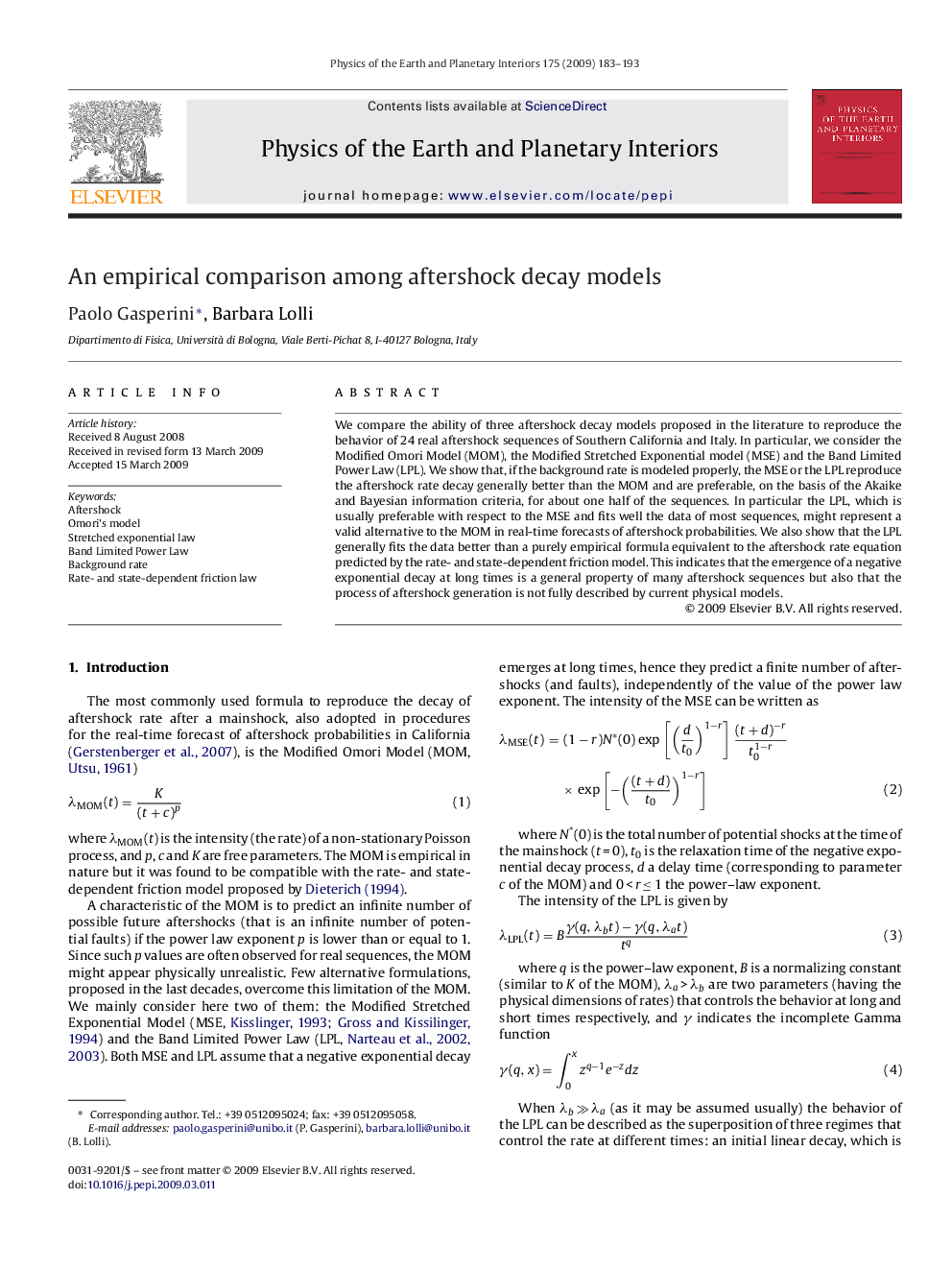| Article ID | Journal | Published Year | Pages | File Type |
|---|---|---|---|---|
| 4742295 | Physics of the Earth and Planetary Interiors | 2009 | 11 Pages |
We compare the ability of three aftershock decay models proposed in the literature to reproduce the behavior of 24 real aftershock sequences of Southern California and Italy. In particular, we consider the Modified Omori Model (MOM), the Modified Stretched Exponential model (MSE) and the Band Limited Power Law (LPL). We show that, if the background rate is modeled properly, the MSE or the LPL reproduce the aftershock rate decay generally better than the MOM and are preferable, on the basis of the Akaike and Bayesian information criteria, for about one half of the sequences. In particular the LPL, which is usually preferable with respect to the MSE and fits well the data of most sequences, might represent a valid alternative to the MOM in real-time forecasts of aftershock probabilities. We also show that the LPL generally fits the data better than a purely empirical formula equivalent to the aftershock rate equation predicted by the rate- and state-dependent friction model. This indicates that the emergence of a negative exponential decay at long times is a general property of many aftershock sequences but also that the process of aftershock generation is not fully described by current physical models.
